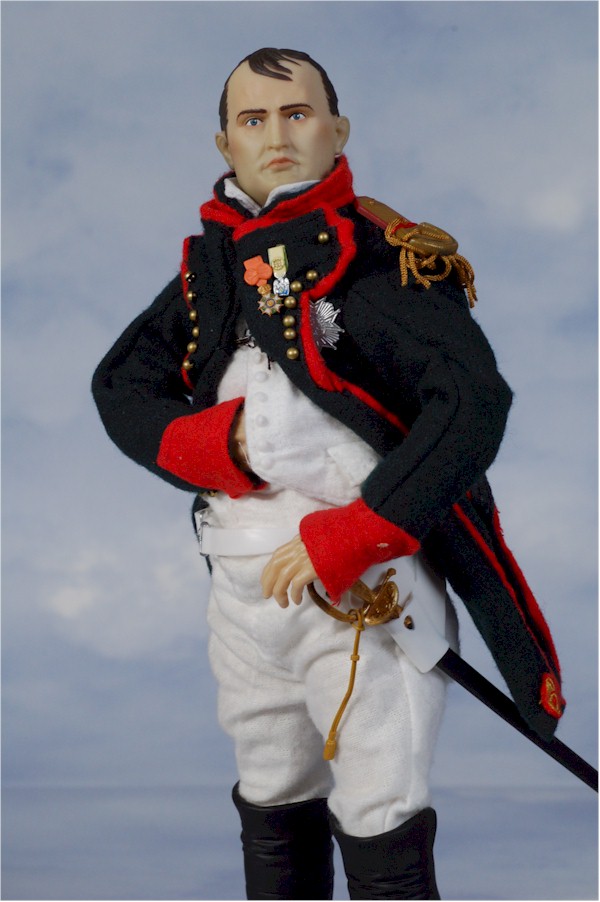
http://www.napoleon.org/en/special_dossier/caricatures/caricatures5.htm

his caricature looks a bit like an answer to Gillray's caricature, Tiddy-Doll, the Great Maker of Gingerbread , in which Napoleon was baking new kings. Here, on the contrary, kings of wax, made by the Emperor, are melting or are broken: Murat, king of Naples (macaronis), Joseph,king of Spain, Jérôme, king of Westphalia, Elisa, great-duchess of Tuscany, Louis,king of Holland. All these puppet sovereigns, members of Napoleon's family, are exhibited in a fairground where they can be seen for 2 sols. The Emperor cries his ruin and despair at such a sight. The word "cire", which in French means "wax", is of course a pun on the word "Sire", title given to sovereigns. This caricature illustrates the influence of popular culture over anti Napoleon propaganda. This image pictures a fun fair surrounding, very prone to have an effect on common people. In fact, caricatures are often theatrical scenes where Napoleon is the main character as in numerous lampoon plays which blossomed in 1814-1815 (see Bonaparte in Lyons, 1815 ; Bonaparte or the abuse of abdication, 1815).

A NEW FARCE WHICH WAS PERFORMED IN PARIS WITH SUCCESS, THE MAIN PART PLAYED BY THE KING OF ROME ????? Le Roi de Rome.
Arenenberg, Napoleonmuseum.
| Attributed to George Cruikshank, this caricature was issued like others, simultaneously in English and French in answer to a paragraph in theMoniteur which announced that the King of Rome had attended on his third birthday (March 20, 1814) a review of the troops. This was at the time when Napoleon, after having given regency to Marie-Louise was leading the campaign of France. The Emperor shows his son a parade of veterans whose mouths are pinned shut with Légion d’honneur medals. The entire perfidy of the boastful sovereign who compares himself to Alexander the Great, shows through his speech. He sends off his soldiers to die by deceiving them with tales of glory when in fact they only serve his sole ambition, in this case, reconquering Europe. The poor little king of Rome is nastily caricatured "riding his wooden horsy". It is his answer to his father's words that provokes laughter because, acting on scatology, it is nevertheless extremely realistic. As in many caricatures, the picture takes place in theater scenery. This explains the bubbles containing the words of the actors of the performed farce. |

As for The Wax-Maker's ruin, this caricature pictures Napoleon in fun fair surroundings. The sales talk given by the cosaque who shows the animal to the spectators (the owners of the plate), is written on an explaining strip. Napoleon, chained by Russia and England, is likened to "a tiger of the worst kind". The other animals or figures are the cat, Joseph king of Spain ; the satyre, Jérôme king of Westphalia ; the piglet, Cambacérès, always associated with the most obscene sexuality, living with a dog whose habits are just as dubious, probably the marquis of Aigrefeuille (born in 1745), who like him, enjoyed lustful activities. The « fat red bird of paradise, the great preacher», is cardinal Fesch, uncle of the Emperor ; the monkey may be Talleyrand ; as for the donkey, it is general Hulin (1758-1841), often condemned for the part he played in the duke of Enghien's trial. Governor of Paris, his jaw was smashed by general Malet in 1812, when he discovered the plot against Napoleon.
|







No comments:
Post a Comment